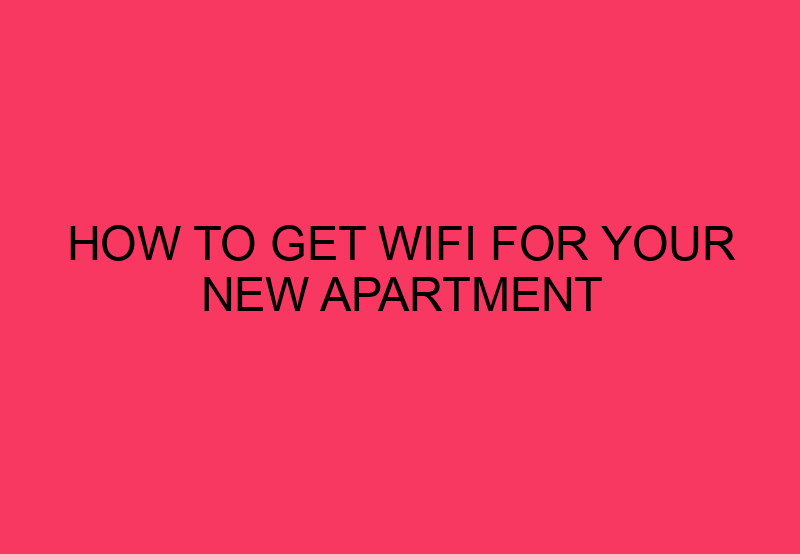1. Determine Your Internet Service Provider (ISP) Options
Getting WiFi for your new apartment starts with finding the right internet service provider (ISP) in your area. Do your research and check if the following popular ISPs are available in your location:
– Comcast Xfinity
– AT&T
– Verizon Fios
– Spectrum
– Google Fiber
Check each provider’s website and look for availability in your area or use online tools to input your zip code. Once you’ve found ISPs available in your area, compare the cost, speed, and reliability of each provider.
2. Choose Your WiFi Plan
Once you’ve determined your options for an ISP, consider your WiFi needs for the new apartment. You need to decide what internet speed you require for your daily routine, how many devices you would connect and the type of activities for which you are going to use internet (voice and video calls, streaming movies and music, online gaming, etc.).
Most ISPs offer different internet connection speeds and packages with different prices. You should always pick the plan that best fits your needs, including the fastest speed available in your area with a reasonable price.
3. Schedule the Internet Installation
After selecting the ISP and plan, schedule an appointment for the installation of WiFi at your new apartment.
The technician will check the wiring, install equipment, and set up a modem/router to create a wireless connection. Make sure that you or someone is present during the installation, so you can ask questions or address any problems that may arise.
4. Set Up Your Wireless Network
Once the installation is complete, you can start setting up your wireless network both on computer and mobile devices. Follow the orientations provided by your ISP, and ensure your network is secure to protect your apartment’s connection from potential threats.
The following are steps to set up your wireless network:
– Connect the modem/router to the internet cable from the wall jack.
– Configure the Wi-Fi network name and password.
– Connect your devices to the wireless network by looking for available Wi-Fi networks in the list of networks.
– Enter the network name and password when prompted.
– In case you face any issues, contact the ISP.
5. Troubleshoot When There’s No Connection
Sometimes, your home internet might stop working or be less reliable due to a host of reasons, such as network congestion, technical issues, or outages. If you are facing any problems despite connecting to your wireless network, the first thing you should do is to check that your devices are connecting to the right network.
Additionally, you should perform the following steps to fix the issue:
– Restart your modem/router and wait for a few minutes before turning it on again.
– Run a diagnostic test on your modem/router.
– Check the modem/router LEDs and see if they’re showing normal activity.
– Contact customer support from your ISP if you’re still facing issues.
Conclusion
Getting WiFi for your new apartment is a crucial aspect of settling in and adapting to your new surroundings. Following the steps outlined above will enable you to have a smooth experience connecting to the internet, as well as troubleshoot any issues that may arise. Remember always to pick an ISP, plan, and router that best suits your specific needs, so you’ll have a comfortable online experience, and don’t forget to prioritize network security.
